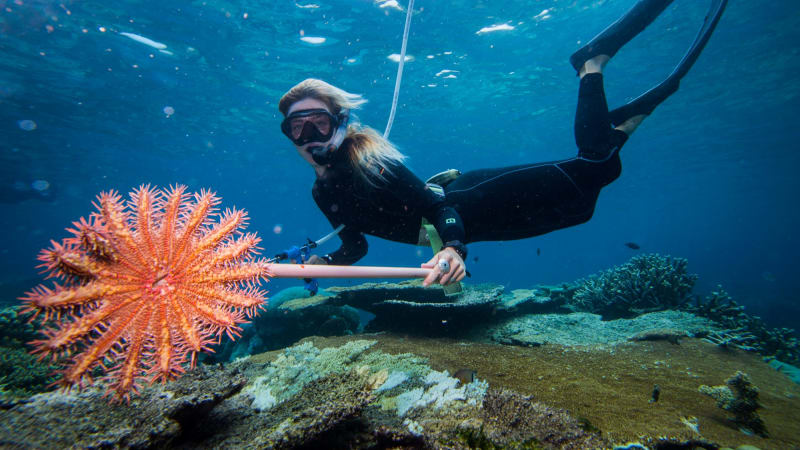RangerBot Saves The Great Barrier Reef By Killing Reef Eating Starfish

A species of starfish called crown-of-thorns starfish eat corals, threatening the already sensitive Great Barrier Reef. Until now, human divers would get underwater to cull the number of these starfish, but researchers at the Queensland University of Technology and Google found a better way.
The RangerBot Is Ready For Action
This small submarine robot was created to kill crown-of-thorns starfish by injecting them with a lethal substance. Together with the Great Barrier Reef Foundation and Google, researchers at the Queensland University of Technology have “trained” their robot to detect the enemy.
Professor Matthew Dunbabin, one of the RangerBot team member, explains what their machine can do:
“We’ve ‘trained’ RangerBot to detect crown-of-thorns starfish – and only these coral-destroying starfish – in much the same way as people learn to differentiate between various forms of sea life. Using real time computer vision processed on board the robot, RangerBot can identify these deadly starfish with 99.4 per cent accuracy.”
As soon as he identifies the correct species, the robot will inject it with a deadly substance that only affects the starfish and nothing else in the reef, added Prof. Dunbabin.
The drone is 75 cm long and weight 15 kg. It can also be used as a remote monitoring device for observing the reef with its high-tech vision system.
A Multifunction Ocean Drone
Professor Dunbabin explains that this drone can be used to find many other issues concerning coral reefs:
“This multifunction ocean drone can monitor a wide range of issues facing coral reefs including coral bleaching, water quality, pest species, pollution and siltation. It can help to map expansive underwater areas at scales not previously possible, making it a valuable tool for reef research and management.”
And what makes RangerBot even better is that it can spend three times more time to gather data compared to human divers, it can operate in any conditions, be it day or night and can get to places considered unsafe for human divers.
In 2016, the project won the “Google Impact Challenge” and got $750,000 of funding, allowing the team to create it.
The RangerBot has passed the tests at the Australian Institute of Marine Science and should be ready to save the reefs!

0 comments